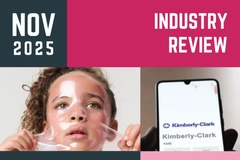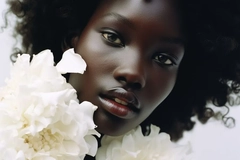E.L.F. acquires Hailey Bieber’s Rhode for US$1B
E.L.F. Beauty has announced it will acquire skin care brand Rhode in a US$1 billion deal, despite the brands’ contrasting market positions and E.L.F.’s recent price increase linked to tariff pressures.
E.L.F. will take on US$600 million in new debt to fund the acquisition. The company ended the 2025 fiscal year with US$148.7 million in cash and US$256.7 million in debt.
The announcement comes days after E.L.F. said it would raise prices by US$1 across its product range starting August 1, citing inflation and proposed US tariffs. At the same time, the acquisition brings together two brands with notably different identities.
E.L.F. is known for its budget-friendly, trend-driven products sold widely in mass retailers such as Walmart, with prices typically ranging from US$3 to US$15. In contrast, Rhode has carved out a premium niche since launching in 2022. It offers a simplistic product range with a direct-to-consumer strategy and price model highlighting high-quality ingredients and minimalist branding.
We speak to Innova Market Insights’ Beauty Personal Care and Household Division project lead about the acquisition’s timing and the brands’ dissonance. “This US$1 price hike dented the optimism around what many call a game-changer acquisition in the beauty space,” she says.
“While E.L.F. has reassured its customers that it remains budget-friendly and user-first, the company’s financial health inevitably comes into question. E.L.F. has long owned the identity of being convenient, accessible, and pocket-friendly — but this move risks alienating price-sensitive users who may feel the brand is no longer ‘for them’ as it climbs the market hierarchy.”
She adds that while both brands have a strong understanding of Gen Z consumers and are quick to tap into fast-moving trends, their approaches to value and positioning differ significantly.
“E.L.F. plays in the inexpensive masstige space, while Rhode leans toward premium and functional skin care. Their strategies for innovation are also distinct, raising the question of whether this brand interplay can preserve each identity while still creating meaningful synergy.”
 Hailey Bieber remains Chief Creative Officer of Rhode following the US$1B acquisition.Prestige meets mass market
Hailey Bieber remains Chief Creative Officer of Rhode following the US$1B acquisition.Prestige meets mass market
Before the acquisition, Rhode announced plans to launch in Sephora stores across North America and the UK later this year. This will mark the brand’s first entry into physical retail, having previously operated solely through its direct-to-consumer platform.
The Sephora rollout is expected to expand Rhode’s reach and position it more firmly within the prestige skin care space. E.L.F. is not currently sold in Sephora stores in the US, meaning the Rhode acquisition gives the company a new foothold in the prestige retail channel, which could support a broader shift toward premium positioning.
However, while the acquisition brings new prestige potential, it also adds complexity to E.L.F.’s business model, as Rhode will continue to operate out of Los Angeles, US, with its existing leadership. The celebrity founder of Rhode, Hailey Bieber, remains the brand’s chief creative officer and head of innovation, a move that some view as critical to preserving the brand’s unique identity.
“It is hopeful that Bieber is still very much involved since that is, to an extent, a make-or-break for the brand’s reputation and cultural positioning,” says the project lead.
“Besides being trend-savvy, she aligns well with the cultural attitudes of Gen Z and values an authentic connection to the end audience. This has been a very strong point for Rhode’s success.”
That individuality, the project notes, is part of what gives Rhode its market identity. “In the presence of a bigger parent company whose accessibility and presence have always been much wider, there is always a chance of getting lost among the crowd,” she says. “However, if the creative aspect is well secured over the long term, this risk can be mitigated significantly.”
Addressing the broader structural dissonance between the two brands, Innova project lead explains that there must be a synergy between both companies to ensure neither gets diluted.
“While Rhode needs to adapt to the wider accessibility of E.L.F., E.L.F. must focus on marketing its quality since its accessibility and budget pricing are already well established.”.jpg) E.L.F. and Rhode target consumers through different brand strategies and pricing models.
E.L.F. and Rhode target consumers through different brand strategies and pricing models.
“In some ways, this is a marriage between two very differently ideated brands — so while the osmosis is necessary to develop the business, individualistic features should not be lost in the noise either,” she adds.
A surprising purchase
Financial data released alongside the deal shows strong sales growth but rising expenses. E.L.F. reported US$1.31 billion in net sales for fiscal 2025, up 28% year-over-year, but net income declined to US$112 million from US$127.6 million the year before.
Selling, general, and administrative expenses jumped to US$777.7 million, a US$200 million increase over the previous year.
E.L.F. withheld a financial forecast for fiscal 2026 due to uncertainty over changing trade policies.













